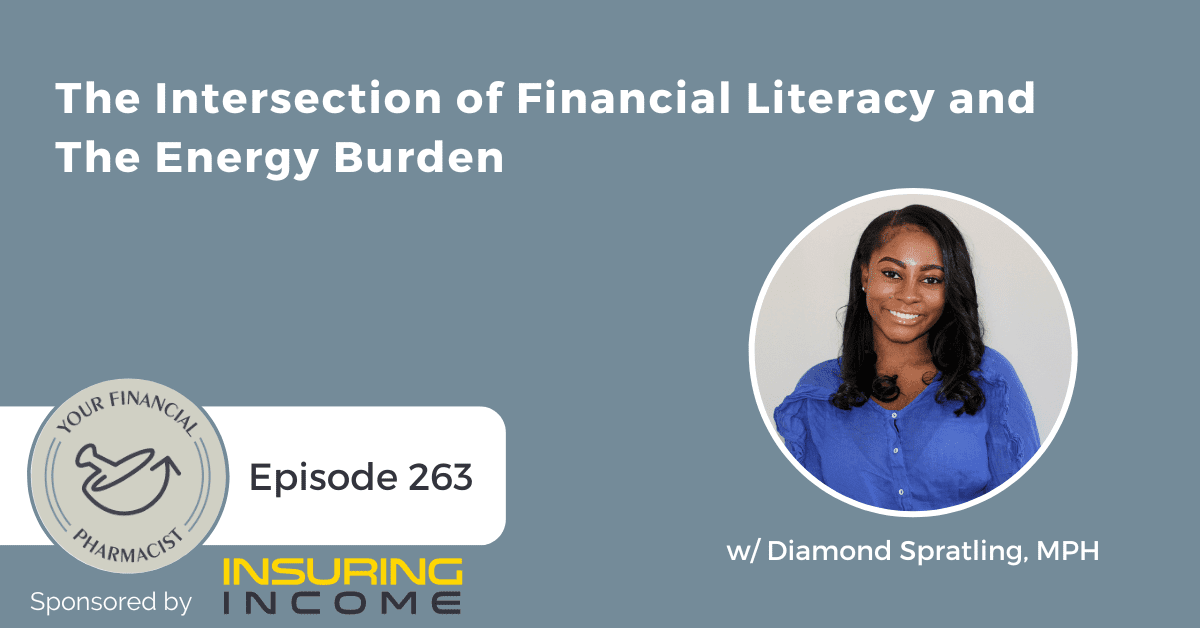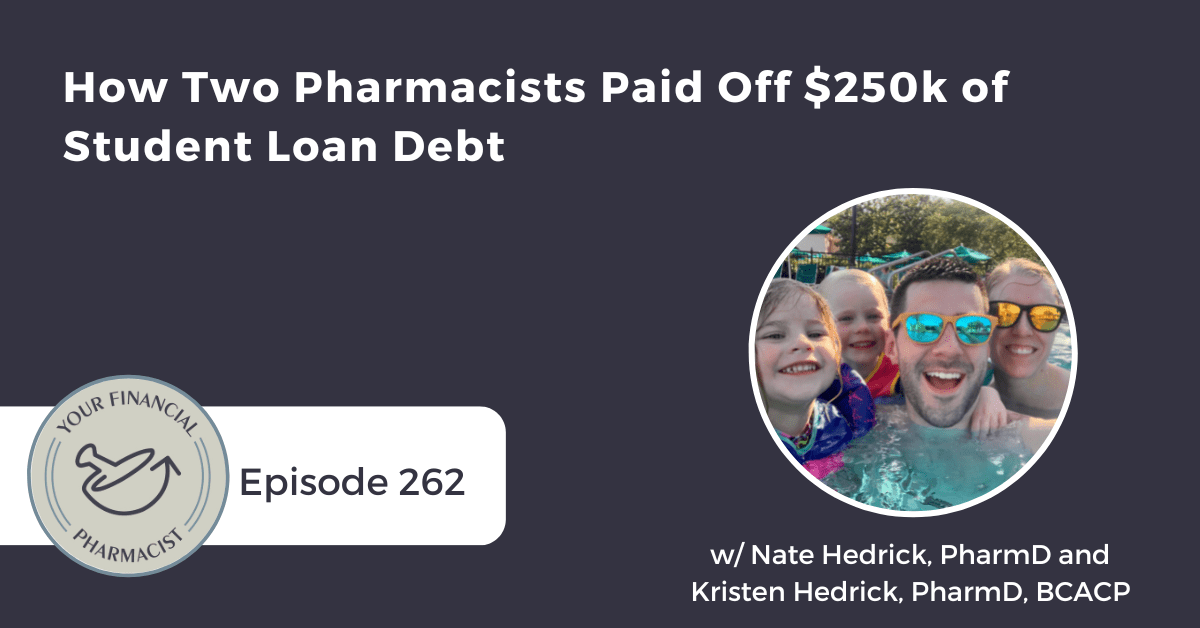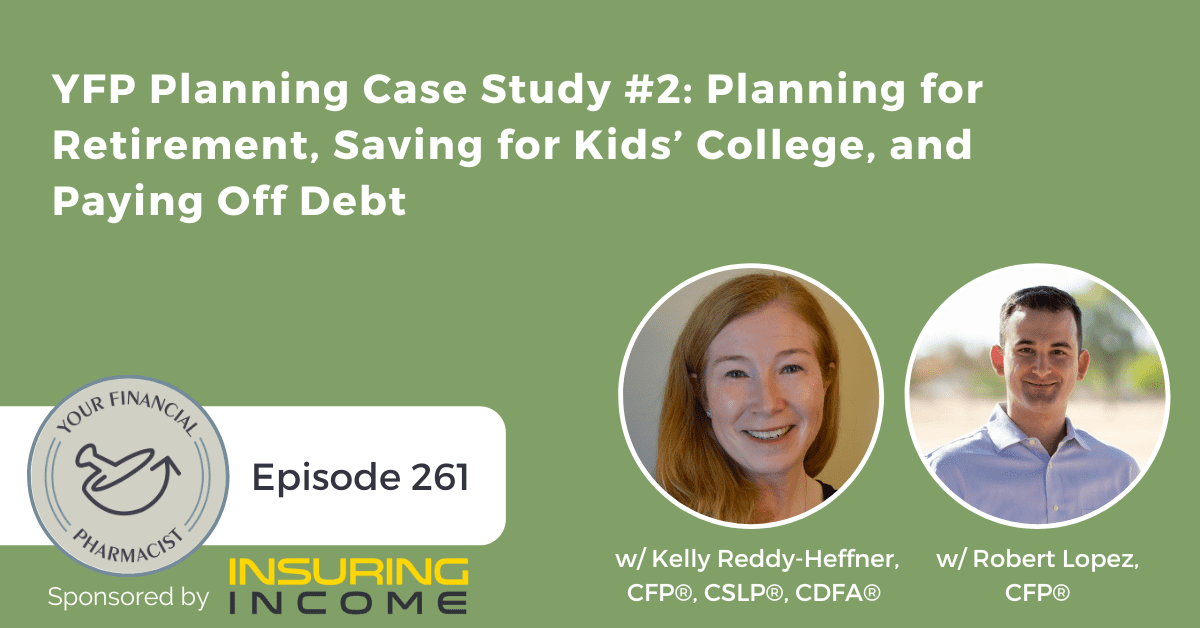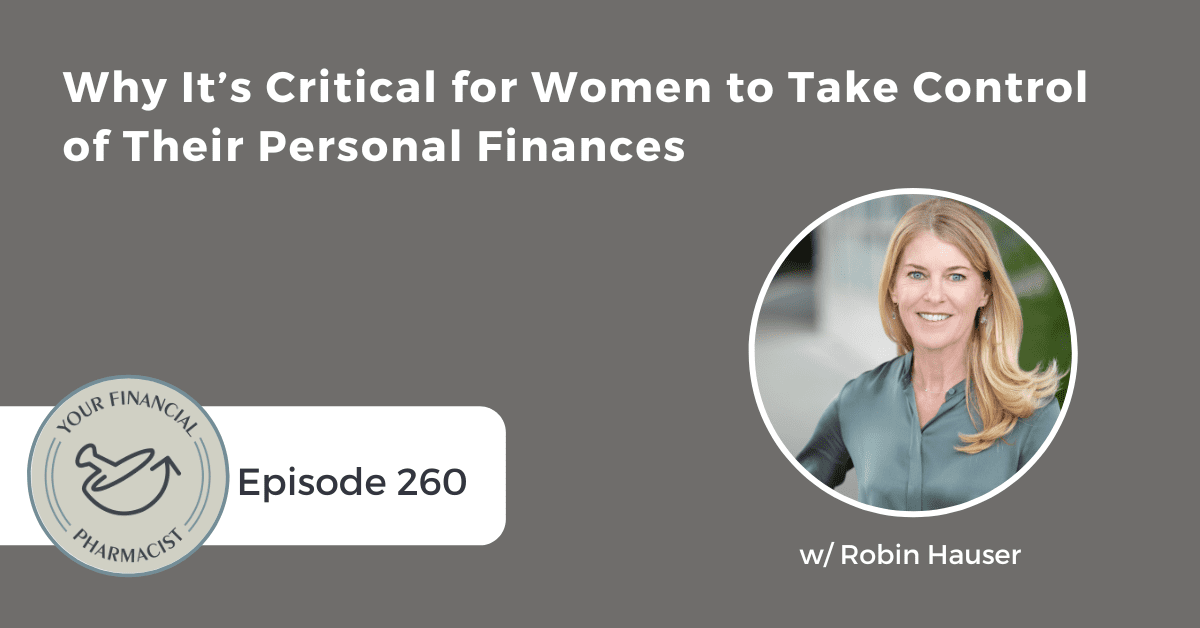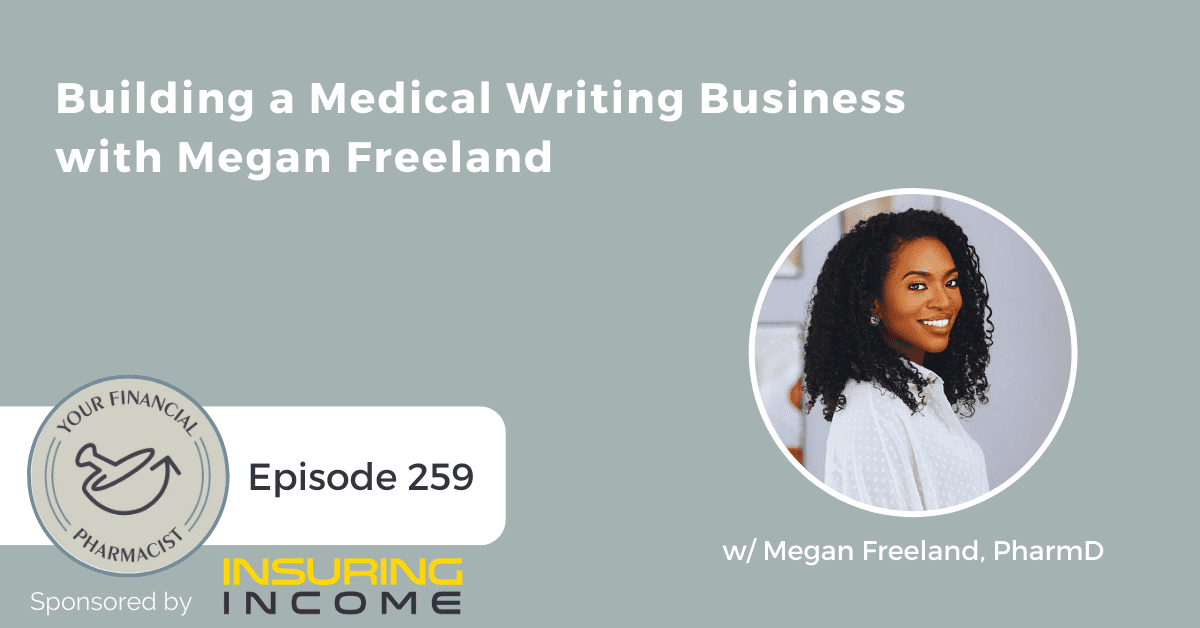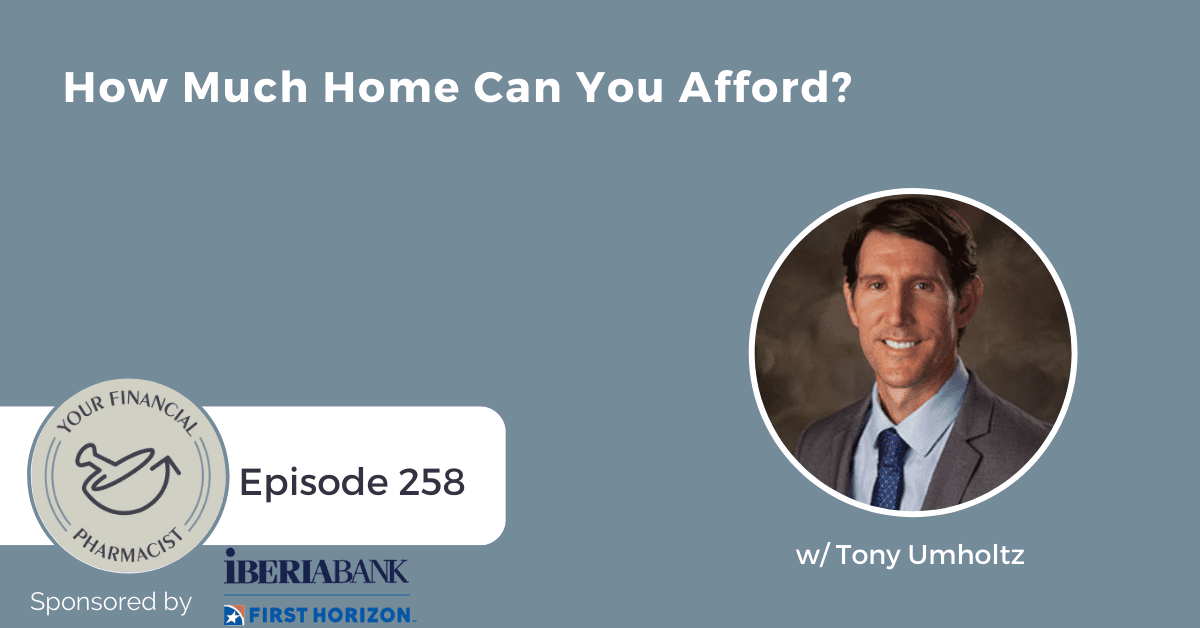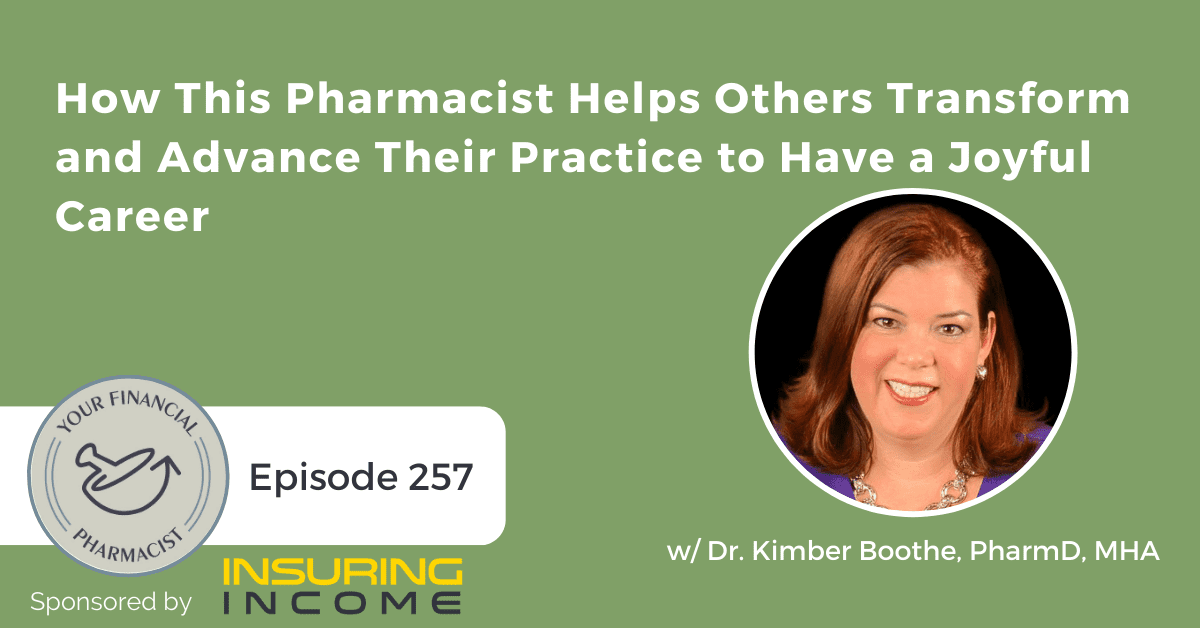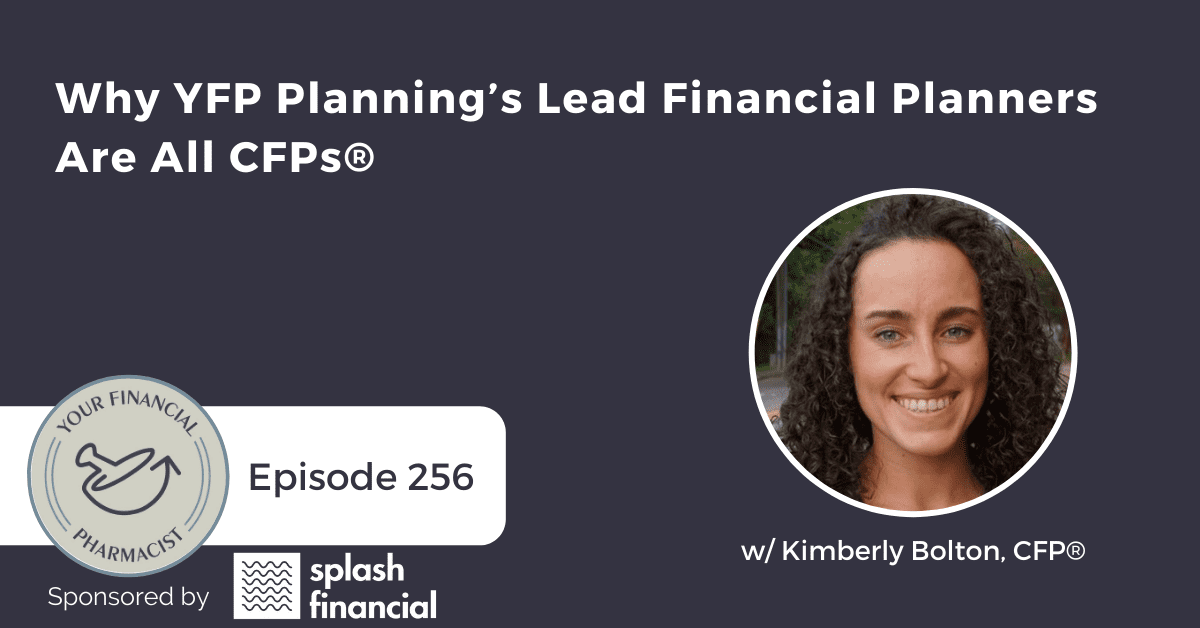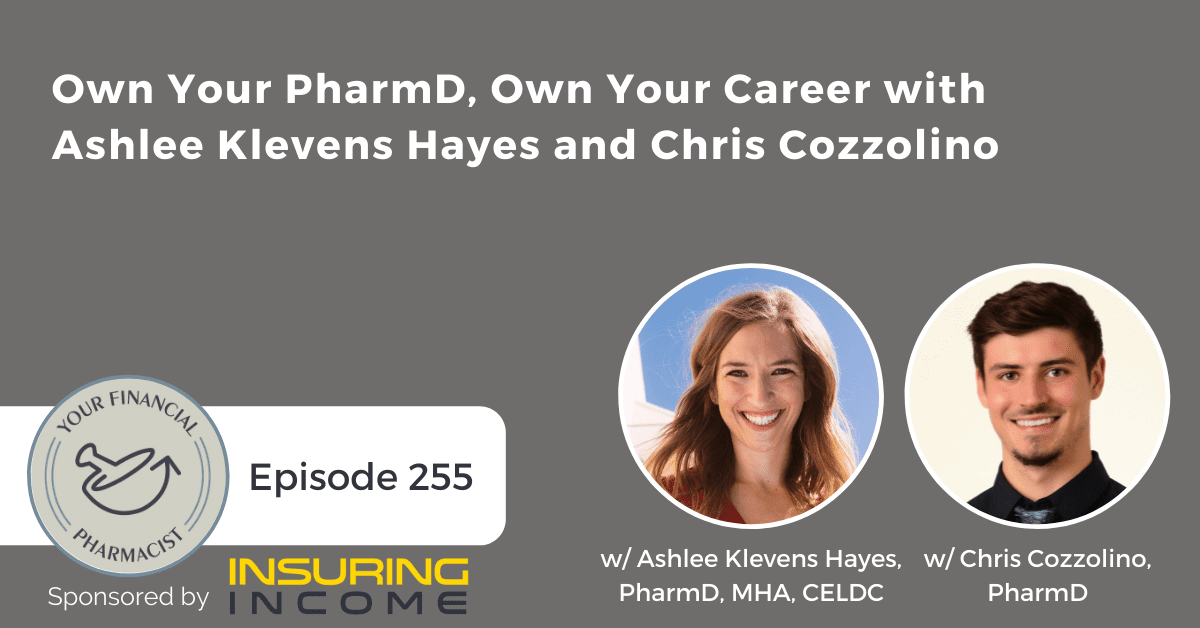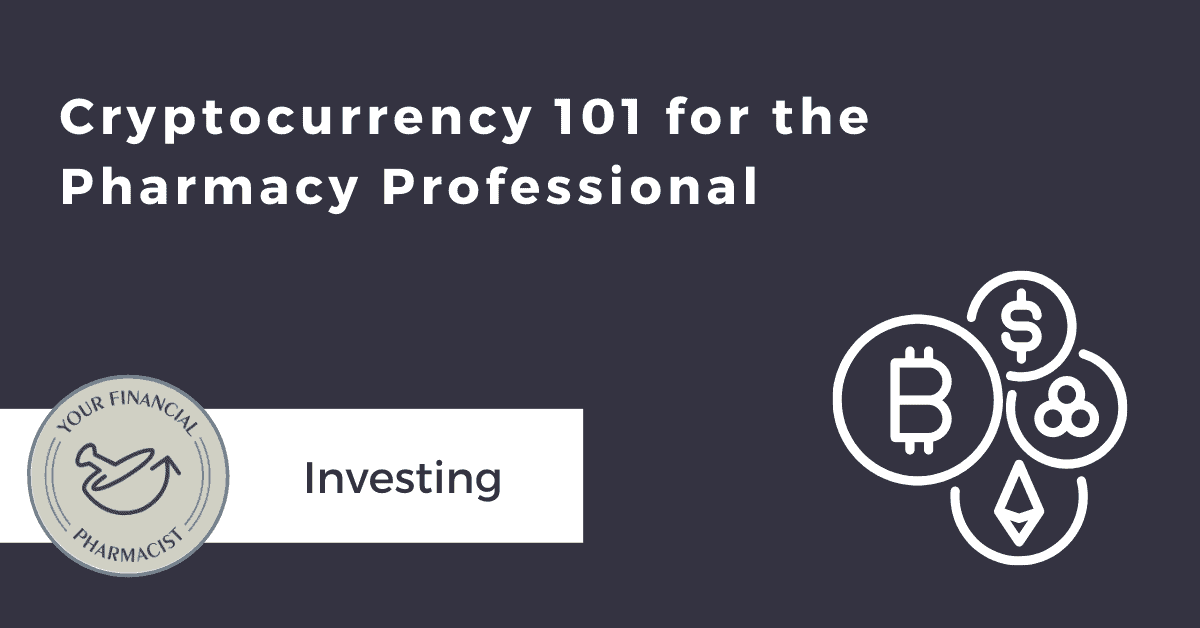The Intersection of Financial Literacy and The Energy Burden
On this episode, sponsored by Insuring Income, Diamond Spratling, an impact-driven environmental health professional and non-profit leader, discusses her TEDx talk, The Secret to Clean Energy: Addressing The Root Causes of Energy Burden.
About Today’s Guest
Diamond Spratling is an impact-driven environmental health professional and non-profit leader motivated to mitigate health, racial, and environmental inequities in Black and Brown communities. She is the founder of Girl Plus Environment, a national non-profit organization designed to educate, engage, and empower Black and Brown girls, women, and non-binary individuals to stand up for environmental justice in their own neighborhoods.
The Detroit native and 2021 & 2022 TEDx speaker has spent more than six years at the forefront of environmental justice. Ms. Spratling has led many environmental and health initiatives for cities and organizations such as the Centers for Disease Control and Prevention, Bloomberg Associates, WaterAid International, and Greenlink Analytics.
Episode Summary
America is in an energy burden crisis. In today’s show, we will unpack what energy burden means, the root causes of energy and utility burden, and how financial literacy and education play a role in combating energy burden. Joining YFP Co-Founder & CEO, Tim Ulbrich, PharmD, is environmental health professional and nonprofit leader, Diamond Spratling. We discuss Diamond’s TED X Talk, “The Secret to Clean Energy: Addressing Root Causes of Energy Burden,” where she addresses this crisis. In that talk, Diamond shares the disparities of energy burden for low-income communities in the United States typically made up of people of color. After Diamond shares her professional background and how she ended up in environmental health, the conversation moves to the three aspects of environmental justice and her definition of energy burden. Listeners will learn about the correlation between income and energy burden, how and why America is failing in financial literacy education, some ideas on how to implement financial literacy education in America, and why all people should learn about financial literacy from an early age. Diamond provides background and insight into the why and how of her non-profit organization, Girl Plus Environment. Through Girl Plus Environment, Diamond engages black and brown girls, women, and nonbinary individuals in all forms of environmental justice.
Key Points From This Episode
- A warm introduction to today’s guest, Diamond Spratling
- Diamond’s educational and professional background.
- How she got into doing the work that she’s involved in today.
- Her definition of environmental justice.
- Breaking down the three aspects of environmental justice: Earth, built, and social.
- What energy burden is and why our guest decided to speak about it.
- Why income is a big factor of energy burden.
- What an acceptable energy burden percentage looks like.
- Energy burden versus utility burden.
- Taking a look at some of the root causes of energy burden.
- Why America is failing in financial literacy education.
- How to implement financial literacy education in America.
- The importance of educating the youth as early as possible.
- Diamond provides a link between improved financial literacy and the energy burden crisis.
- What Girl + Environment is and why she brought it to fruition.
Highlights
“I can work at the intersection of both environments with justice and health equity. Understanding that both are very important and both highly impact each other.” – Diamond Spratling, MPH [0:05:21]
“In the clean energy sector, we often focus so much on the environmental side of things but neglect this whole other side of energy burden, which is income.” — Diamond Spratling, MPH [0:09:48]
“There’s a lot of disparities in income and race as well that we have to be able to first, understand and identify, but also try to mitigate and eliminate.” — Diamond Spratling, MPH [0:14:19]
“We need to think hard about why are we not putting financial literacy in the classrooms, especially in communities that have generational poverty.” — Diamond Spratling, MPH [0:17:15]
“I saw a gap in who understood what environmental justice was in comparison to who was at the forefront of the justice movement.” — Diamond Spratling, MPH [0:24:24]
“How do we know how to protect ourselves if we don’t even know that environmental racism exists?” — Diamond Spratling, MPH [0:25:20]
Links Mentioned in Today’s Episode
- The Secret to Clean Energy: Addressing Root Causes of Energy Burden | Diamond Spratling | TEDxBGSU
- YFP Planning: Financial Planning for Pharmacists
- Schedule a free Discovery Call with YFP Planning
- Insuring Income: Get Quotes and Apply for Term Life and Disability Insurance
- Girl Plus Environment
- Financial Literacy Statistics: FfinEDge, University of Chicago
- Follow Girl Plus Environment on Twitter: @girlenvironment
- Follow Girl Plus Environment on Instagram: @girlplusenvironment
- Connect with Girl Plus Environment on Facebook
- Connect with Diamond Spratling on LinkedIn
- Follow Diamond Spratling on Twitter: @diamondsprat
- Your Financial Pharmacist Disclaimer and Disclosures
Episode Transcript
[INTRODUCTION]
[0:00:00.4] TU: Hey everybody, Tim Ulbrich here and thank you for listening to The YFP Podcast, where each week, we strive to inspire and encourage you on your path towards achieving financial freedom.
This week, I had the pleasure of sitting down with Diamond Spratling, an impact-driven, environmental health professional and nonprofit leader, to talk about her TED X talk: “The Secret to Clean Energy: Addressing the Root Causes of Energy Burden.” During the show, we discuss what environmental justice is, the root causes of energy burden, how financial literacy and education can play a role in combatting energy burden, and why Diamond started a 501(c)(3) nonprofit organization that shares educational resources tools and information to get black and brown girls, women and nonbinary individuals excited and engaged in all forms of environmental justice.
Before we hear from today’s sponsor and then jump into the show, I recognize that many listeners may not be aware of what the team at YFP Planning does in working one-on-one with more than 240 households in 40-plus states. YFP Planning offers free only, high-touch financial planning that is customized for the pharmacy professional. If you’re interested in learning more about how working one-on-one with a certified financial planner may help you achieve your financial goals, you can book a free discovery call at yfpplanning.com.
Whether or not YFP Planning’s financial planning services are a good fit for you, know that we appreciate your support of this podcast and our mission to help pharmacists achieve financial freedom.
Okay, let’s jump into my interview with Diamond Spratling.
[SPONSOR MESSAGE]
This week’s podcast episode is brought to you by Insuring Income. Insuring Income is your source for all things term life insurance and own occupation disability insurance. Insuring Income has a relationship with America’s top-rated term life insurance and disability insurance companies, so pharmacists like you can easily find the best solutions for your personal situation. To better serve you, Insuring Income reviews all applicable carriers in the marketplace for your desired coverage, supports clients in all 50 states, and makes sure all of your questions get answered.
To get quotes and apply for term life or disability insurance, see sample contract from disability carriers or learn more about these topics, visit insuringincome.com/yourfinancialpharmacist. Again, that’s insuringincome.com/yourfinancialpharmacist.
[INTERVIEW]
[0:02:23.9] TU: Well, I’m excited to welcome Diamond Spratling to the YFP Podcast. Diamond is an impact-driven environmental health professional and nonprofit leader, motivated to mitigate health, racial and environmental inequities in black and brown communities. She’s the founder of Girl + Environment, a national nonprofit organization, designed to educate, engage and empower black and brown girls, women, and nonbinary individuals to stand up for environmental justice in their own neighborhoods.
Diamond is a Detroit native and 2021 and 2022 TED X speaker that has spent more than six years at the forefront of environmental justice. Diamond has had many environmental and health initiatives for cities and organizations such as the CDC, Bloomberg Associates, Water Aid International and Green Link Analytics. Diamond, welcome to the show.
[0:03:09.9] DS: Hi, thank you so much for having me.
[0:03:12.4] TU: Well, this is a rare opportunity and we crossed paths somewhat unexpectedly at the TED X Bowling Green State University event. I had the opportunity to get to know you a little bit as a co-speaker but also to watch your talk on energy burden, with the focus on financial literacy as an opportunity, financial educational literacy as an opportunity to really get out some of the root causes around energy burden.
Which I thought would make for a great interview on the show, so I really appreciate you taking time to come on. We’re going to talk about, and I’ll link in the show notes to your TED X talk, “The Secret to Clean Energy: Addressing the Root Causes of Energy Burden,” for folks that want to go and watch that. Before we get into the topic, love to hear more about your background, where you went to school, what you studied and what drew you into the work that you’re doing today.
[0:03:57.9] DS: Yes, absolutely. So, I started my undergraduate career at Bowling Green. I started in 2014 and I studied environmental policy and analysis, with a specialization in international perspectives. So for me, I guess, growing up, I was always more that typical environmentalist and save the polar bears, save the trees type of work.
It wasn’t until I had an internship, my second year at Bowling Green, where I was working at the intersection of energy policy in health equity. I learned about all of the different disparities between different communities that we saw in our environment, how it impacted our health, and, for me, that was very triggering, especially being a black woman. I felt like, “Wow, all of these disparities and health implications that we’re seeing are in communities where I essentially grew up.”
So I was like, okay, all the more earth side of things and the trees and things like that, those are important but I need to center, recenter my work and what I want to do in the next couple of years. So basically, I decided that I would shift gears a little bit and get into the public health side of things when it came to the environment.
After I graduated from Bowling Green in 2018, I went directly to Emory University to get a master at public health at the Rowland School of Public Health, so that I can work at the intersection of both environments with justice and health equity. Understanding that both are very important and both highly impact each other. So that’s basically how I got into the sector and I’ve been in the sector for about six years since then.
[0:05:37.0] TU: So, you already mentioned one term that I think we’re going to visit often throughout the show, which is environmental justice. Another is energy burden. I want to take a moment to define these terms. Let’s start with environmental justice. How do you define environmental justice?
[0:05:49.8] DS: Yeah, absolutely. So often, we go back to this definition that I’ve seen on the department of energy and I think that they do a really good job in making sure that when we talk about environmental justice, we’re talking more so about the human impact and human implications from our environment.
So when we talk about safe drinking water, air pollution, how does that impact our environment, specifically people who are disproportionately impacted by our environment? So, a lot of times, those are low-income communities and those are also communities of color.
So, environmental justice, since there’s this aspect of making sure that those who are disproportionately impacted by our environment are at the forefront of those decisions, and being able to have access to environmental resources that helps improve their overall mental health, physical health, and just like wellbeing as a human rights.
[0:06:38.8] TU: You talk on your website, which we’ll link in the show notes, Girls + Environment, you talk about three different aspects of environmental justice around the earth environment, the built environment, and the social environment. Can you break those down a little bit further?
[0:06:51.1] DS: Yes, absolutely. And I’ll just flag, we’re very intentional in making sure that we are interdisciplinary with how we consider environmental justice. So, traditionally, in the past, people in this sector have usually looked at this earth environment side of things, and so do we have access to safe drinking water, clean air, landfills, waste, pollution, different things like that. So that’s more so our earth environment, but I think that those have huge implications on other parts of our environments too.
We also look at our built environment. Our built environment can be, for example, do I have access to a safe park near me? What is the walkability in my neighborhood, are there sidewalks for me to even run or ride my bike, are there bike lanes? So many things, all the way down to having access to a grocery store, can be considered a part of our built environment.
The last concept that we look at is our social environment. That gives it more the feeling of feeling welcomed in your environment, feeling like you have a place. So, is there a YMCA place in my neighborhood or boys and girls club or some type of community group of people who either have shared experiences as me, look like me, or somewhere that I have a support system that can help me through everyday life situations and things like that?
We look very interdisciplinary in our environments but also, understanding that all three of these pillars have everything to do with racial justice and health equity and even just thinking about our life expectancy and quality of life.
[0:08:20.3] TU: In your TED X talk at BG, the title again, “Secret to Clean Energy: Addressing the Root Causes of Energy Burden.” Define for us, what is energy burden? And, why did you decide that this was the topic that you wanted to share about?
[0:08:34.7] DS: Yeah, absolutely. So energy burden is basically this concept of, how much are you paying for your energy or utility bills every month and in comparison to how much money you are actually bringing in each month. So, it looks at two different things, the amount of your bills that you’re having to pay but also, your income. Your annual household income.
So basically, if you just do, I like a sample of formula, you basically just divide both of those numbers. You’re able to get what your percent of energy burden is and, for a lot of households, if you have an energy burden of over 10 percent, then you are considered severely energy burdened.
As back to the TED talk, what I would say is, my primary reason for censoring it around this concept of energy burden is that a lot of times, especially in the clean energy space, we focus so much on, “Let’s get this renewable energy out there. We need to invest in solar power. Why don’t you have solar panels on your roof or wind energy?”, and things like that.
It’s like wow, all of those things are great but look at the affordability. If I can barely pay my energy bills, how do you expect me to invest in all this really cool technology, as far as renewable energy? I felt like, in the clean energy sector, we often focus so much on the environmental side of things but neglect this whole other side of energy burden, which is income.
A lot of families are not making enough income to even pay their bills. So, having to pay an energy bill or utility bill, that’s a significant burden for people, even more than we think about, from the environmental side of things.
[0:10:10.8] TU: That was really what caught my attention actually, in the practice session we did the day before. When you talked about this heightened focus on some of the clean energy things, whether it’s windmills or solar panels or other things, which obviously have value and purpose, and the technology is being advanced but if we’re not addressing some of the core infrastructure and the core issues, are we out of order, right?
I often think about investing, when we talk about it on this show, there are steps to investing, like hey, if your employer offers a match with your retirement accounts that’s low hanging fruit, you take it, and then we progress that investing plan to more brokerage accounts and other things and often, we may do those things out of order, and that really struck me of, you know, great conversations.
I think often, those gather headlines and perhaps have some political motivations that are behind them, but are we really getting to the root cause of what is necessary around energy burden? Just put numbers to your definitions. So, if energy burden as percent of annual household income spent on energy bill.
So round numbers, if someone makes $100,000 a year and they’re spending $3,000 on energy bills, they would be looking at 3 percent and you mentioned greater than 10 percent is considered a substantial burden. Is there a normal or an average or an acceptable that we would look at as a percentage?
[0:11:21.8] DS: Yeah, so around 3 percent is around like the average energy burden across the US, three, 3.5 percent. If you are above five or 6 percent, then that means that you are highly energy burdened and then if you are above 10 percent, that means you are severely energy burdened.
[0:11:39.9] TU: Okay, that makes sense and it’s just like electricity in terms of gas and electric, is this also inclusive of water? How do you typically define this when we look at the utilities?
[0:11:50.5] DS: Yeah, so when we say energy burden, we are mostly looking at gas and electric but you can also say utility burden and that will then include your water bills as well.
[0:12:02.2] TU: So, as we just alluded to, some of these other solutions around clean energy may not be addressing the root cause. So, the natural question that is, what are the root causes as it relates to the energy burden? I really found this part of your TED X talk fascinating. So talk to us about some of the root causes related to the energy burden and then we’ll talk about the financial literacy piece as a potential solution.
[0:12:20.9] DS: Yeah, absolutely. One of the things that I talk about in my TED talk is this concept of housing and also, even just redlining, which I know we think like redlining happened tons of years ago but unfortunately, lots of communities in neighborhoods are still bearing that burden.
So, when we talk about housing, like for example, I can run my air-conditioning unit all day or even just an hour, but if I don’t have proper housing conditions, if the structure of my home is horribly put together or very old, if I don’t have tons of insulation in my home, then it’s really doing nothing.
I’m just running the air conditioning or the heat all day for it to not even cool down or heat up my home. That’s a huge issue right there thinking about housing, especially when we think about section eight housing. I mean, those homes are poorly structured, rarely ever updated or invested in and therefore, a lot of those homes have to constantly run electricity.
I mean, if you think about what happened in the Bronx about a couple of months ago, there was that huge section eight housing fire, which resulted in the fact that people were freezing cold in their homes because they couldn’t afford to pay for the electric, or they’re running the gas from their stove which we know is very unsafe, or just using space heaters which also can be unsafe as well.
So, housing is definitely an issue here, but the other thing that I often like to bring up is just this concept of income disparities and thinking about communities of color, especially black communities, how much we are getting paid in relation to our white counterparts. So, again, when you go back to this concept of energy burden, it’s not just how much you have to pay for utility bills, it’s how much annual income you’re bringing in, in the first place.
We’re already set back by whatever the difference is between white counterparts and black communities and how much we’re bringing in financially every year, that’s a huge impact in itself as well. I think there’s a lot of disparities in income and race as well that we have to be able to first, understand and identify, but also try to mitigate and eliminate these issues as well.
[0:14:30.7] TU: Yeah, and I think it’s so important to go back to the definition, two parts of the equation, right? The utilization and then the utilization relative to the income, and I think you just articulated so well some income gap and challenges, and I think on the utilization, we’re not talking here about, “Oh, I’d like to keep my home at 75 degrees when it could be 72. We’re talking about infrastructure problems that lead to unnecessary high burdens on energy use, and I think that concept, to me, was really something you articulated so well.
Let’s talk about some financial literacy piece as a potential solution. Obviously, this is a multipronged issue as well as an approach that’s needed to address it, and I just wanted for a moment talk about some statistics that were reported by the University of Chicago around financial education and literacy, and we’ll link to these in the show notes, and then I’ll get your thoughts, Diamond, a little bit on why is the financial literacy so inadequate in this country and what are some of the potential solution.
So, I’ll read a couple of these, nearly 50 percent of high school seniors say they wish they learned personal finance in school. That is according to discovery education in 2018. A recent study finds that differences in financial knowledge account for 30 to 40 percent of retirement wealth inequality and that’s from a 2017 study by Lucardi et al. A 2016 survey indicated at 31 percent of young Americans agreed that their high school education did a good job teaching them healthy financial habits. Bank of America, 2016, meaning that the majority did not think that.
A study from FINRA in 2015, students exposed to various financial educations at high school saw their credit scores increased by an average of 20 points and their probability of delinquency reduced. I mean, these go on and on but it impacts retirement savings, it impacts the ability to deal with energy bills in the moment, it deals with access to housing through credit and other issues.
As you hear those statistics, why has this been an area that we just have not done a good job, around financial education and literacy?
[0:16:26.2] DS: Yeah, that’s a big question. I mean, it’s hard to even find the why. A lot of those statistics were from students or from professionals who thought back to their education in high school and I mean, even thinking about my personal experiences, I’ve never taken a financial literacy class and I think that that’s true for a lot of us. As to why they don’t teach it to us, I have absolutely no idea.
I mean, a part of me is thinking, on the back of my head like of course, they don’t want all of us to know how to protect ourselves financially, you know? They want the rich to get richer and you know, whatever the case may be, but I think that it has had a continuous toll on us because I mean, it is not just the financial issue, it is a public health issue, a mental health and everything else.
I think that we need to think hard about why are we not putting financial literacy in the classrooms, especially in communities that have generational poverty, especially because how else do we get rid of that cycle if there isn’t really a generation that is being taught what to do as far as our finances.
[0:17:35.4] TU: Yeah and I couldn’t agree more. I mean, I think we’re finally starting to see a little bit of traction on recognition to your comment about it’s not just about the dollars. It is a public health, it’s a mental health issue. We’re finally starting to see financial wellness as a key component of wellness and that is certainly a new development I think in the last several years, but it’s long overdue.
We’re starting to see more states, Ohio, finally coming onboard with requiring some personal finance education literacy through the K12 program. That really is baseline and we certainly know from our experiences in undergraduate and professional programs in pharmacy education, despite the awareness that we continue to bring to the topic, it’s slowly developing, but it’s slow, right?
I think there may be some baggage of, “Well, this is a pharmacy degree. We’re not here to talk about personal finance.” But to be an effective clinician, be an overall wellbeing, this is an important part of it, just like we address mental health with our students, right? Just like we talk about other public health issues. So, let me ask you in terms of where we go, sure, we could dwell on why this hasn’t been the case or where we go.
Are there programs or initiatives that you’ve seen to be successful in this area around financial literacy and education? If so, what do they look like? Who is offering? When are they starting them or if not, what do you perceive to be the ideal place of how we implement financial literacy and education?
[0:18:57.4] DS: Yeah, that’s a great question and I’ll probably have to get back to you on this, specific resources. What I would say as far as what I think is most ideal and most critical here, is definitely centering financial literacy in education as young as possible. It is never too young to learn about financial literacy, and I think also, when we use students to learn about financial literacy, then a lot of that gets reflected onto the parents because many other times it’s a generational cycle to instill.
The kids may even know how to protect themselves financially but parents may not. So I think that parenting programs are just as critical as well because you don’t know what you don’t know and so you lean on, “Oh, well my parents did this” or “My parents told me not to get a credit card” or anything like that. So we go based off of what people who we know have done or have not done.
I would say definitely centering conversations in literacy that are directly within the community, that are targeting both students and parents and even grandparents, and being able to provide those resources on a generational side of things, as opposed to just like, “Here is some resources. Good luck” those are, you know, it’s a small piece but I think also just drilling things into people like many, many times.
I think that that’s very, very critical. My boyfriend actually teaches a generational wealth class on Sundays to my family and he’s like, “Well, I thought I already covered this?” I was like, “Cover it again.” Cover it a million times because people need, you know, we want things to be drilled into us as many times as possible. I think doing that and making sure that it is very community centered and family centered is all the better, especially when building that trust with people.
Because traditionally, we’ve been told not to do this and not to do that but really, it’s not always the case, especially when it comes to different financial advice as well.
[0:20:49.3] TU: I love that. I love the focus on community-specific, community-centered. I love the aspect of the family-centered, you know, bringing in the education that includes the families at large. I think the other thing, I am linking those two, research has been done on drug abuse education and really the importance of starting that as early as the pre-k level and it’s longitudinal throughout.
I think something similar in the personal finance space, that it’s got to be early. As life goes on, we carry more baggage with us about finances. We start to hear more stories and scripts and it impacts us, and the longer we go, the harder it is to change. So I think the earlier we can start the conversation, the more longitudinal it can be in the repetition and, to your point, that can happen overtime is so important.
So what do you see, I mean perhaps obvious, perhaps not so obvious, but what do you see is the direct link between improved financial literacy and education and the energy burden crisis?
[0:21:43.5] DS: Definitely. So I think that there are a lot of components here, especially when it comes to education. I mean, a lot of the advocacy or the work that I talk about often goes back to education, because we know that education is linked to how much you know about a specific topic, down to how much you’re potentially going to get paid or your percentage of going to college and things like that.
I think that being able to one, educated ourselves or to be able to have access to education is a concept within itself because a lot of us don’t have access and don’t have good quality educational systems that can help us to earn higher amounts of income every year. A lot of that goes into what’s your education, what did you learn, are you going to go to college for example, which I know college has implications on the financial side of things.
But being able to understand whether or not we have access to an educational system that advocates for us to be able to earn more income, but I think also when we think about this education system, the side of education within the housing and knowing what to look for when buying homes or being able to be in a position where you can own a home, because the impacts that renters, people who rent a home versus people who own a home, there are tons of energy burden disparities with between that too.
So, if you are renting a home, you have less autonomy on even being able to make updates or changes to your home that helps to lower your energy bill, as opposed to someone who, “Oh, I own this home so I may be able to make updates to my house” because a lot of times landlords are like, “Oh, well I don’t care. You need to pay the bill on the first regardless.” So that’s a huge concept too when it comes down to being in a position where you can own a home or purchase a home as well.
[0:23:31.0] TU: Yeah and I think, you know, as I think about the financial literacy, I could see the connection, as you mentioned, to some of the education and the awareness around owning versus renting and updates that you can make to your home or what to look more in buying a home, but it still feels like there is a core issue. You know, I’m thinking about folks that had been in homes for 10, 20, 30 years.
Income gaps have already been established, not to say there can’t be movement or change, but there has to be some changes in advocacy for housing changes and infrastructure and things that may be dependent of the individual and their own financial education literacy and their own financial position as well. Talk to us Diamond about Girls + Environment, what is it? Why did you start it and what are you hoping to accomplish?
[0:24:12.0] DS: Yeah, of course. So Girls + Environment, we are a national organization, we’re a 501 (c) (3). I actually started it my first year at Emory, so back in 2019, and I created it because I essentially saw a gap in who understood what environmental justice was in comparison to who was at the forefront of the justice movement.
So for me, back in 2016 when I was doing my internship first learning about environmental justice, I remember being so fueled up because I learned there were asthma rates in Black and Latino communities that were skyrocketed, and I was just so mad about the air pollution and the asthma rates comparison, and so this was back when Facebook was really popping.
I would go on Facebook and type these long statuses about how mad I was and try to educate my family and friends and no one was really interacting with the posts. They’re like, “What are you talking about?” I realized that, okay, we are experiencing the greatest amount of environmental burdens but none of us even know what’s going on in our own backyards, that’s a huge issue.
How do we know how to protect ourselves if we don’t even know that environmental racism exists? So for me, that was a huge problem and I wanted to get more people who look like me at the forefront of the sector, so Girl + Environment was created specifically so that we can educate black and brown communities on what environmental justice is, engage them in the sector and empower them to be leaders in the sector.
So that they can stand up for themselves and their neighborhoods, but in a very fun and creative way too because I also acknowledge that there is tons of papers out there, literature, but no one wants to read that. Give it to me straight, give it to me in a fine creative way, that is why you’ll see on our page it’s very fun. It’s supposed to be very engaging so that people don’t even realize, “Oh, I’m learning about environmental justice right now.”
Yeah, you sure are, and you’re learning about how it impacts you, your health, your mental health and everything else. So, that is basically why Girl + Environment was created and in the pipeline, we have tons of just different programs that we are putting together. We actually just got funded by Al Gore’s organization for protecting our energy project, which helps to educate black and brown women in Atlanta about energy burden and to put them at the forefront at Georgia’s energy policy process that’s going on this summer.
[0:26:33.9] TU: Wow, congratulations. That’s awesome.
[0:26:35.8] DS: Thank you.
[0:26:37.3] TU: Yeah, no offense to the Department of Energy or research papers but they’re boring, right? I think the platform you’ve created, I love the vision, I love the platform. It’s girl+environment.org. From there you could join the community, you can look at projects that are ongoing, you can read the blog, you can donate, and get involved. So I love the vision of what you’ve created and we’ll link to that in the show notes as well.
So for folks that Diamond want to follow the work that you’re doing and the journey that you’re on, where is the best place that they can go to do that?
[0:27:04.0] DS: Yeah, absolutely. So you can go on our website, girl+environment.org. We’re also on Twitter @girlenvironment and on Instagram @girl+environment and then you can also follow us on Facebook, Girl + Environment and my personal LinkedIn is just my name, Diamond Spratling and I am also on Twitter as @diamondsprat but I’ll be sure to send you all of those links and things like that in case it’s helpful.
[0:27:28.2] TU: Awesome. We’ll include those in the show notes to go along with the TED X talk again, The Secret to Clean Energy: Addressing the Root Causes of Energy Burden. Diamond, thank you so much for taking time to come on the show. I appreciate it.
[0:27:38.0] DS: Yeah, absolutely. Thank you so much for having me. I had a great time.
[END OF INTERVIEW]
[0:27:42.1] TU: Before we wrap up today’s show, let’s hear an important message from our sponsor, Insuring Income. If you are in the market to add own occupation disability insurance, term life insurance or both, Insuring Income would love to be your resource. Insuring Income has relationships with all of the high quality disability insurance and life insurance carriers you should be considering and can help you design coverage to best protect you and your family.
Head over to insuringincome.com/yourfinancialpharmacist or click on their link in the show notes to request quotes, ask a question or start down your own path of learning more about this necessary protection
[DISCLAIMER]
[0:28:18.9] TU: As we conclude this week’s podcast, an important reminder that the content on this show is provided to you for informational purposes only and it is not intended to provide and should not be relied on for investment or any other advice. Information of the podcast and corresponding materials should not be construed as a solicitation or offer to buy or sell any investment or related financial products. We urge listeners to consult with a financial advisor with respect to any investment.
Furthermore, the information contained in our archived newsletters, blog post, and podcast is not updated and may not be accurate at the time you listen to it on the podcast. Opinions and analysis expressed herein are solely those of your financial pharmacist unless otherwise noted and constitute judgments as of the dates published. Such information may contain forward-looking statements, which are not intended to be guarantees of future events. Actual results could differ materially from those anticipated in the forward-looking statements. For more information, please visit yourfinancialpharmacist.com/disclaimer.
Thank you again for your support of the Your Financial Pharmacist Podcast. Have a great rest of your week.
[END]
Current Student Loan Refinance Offers
[wptb id="15454" not found ]Recent Posts
[pt_view id=”f651872qnv”]

